If you’re looking to grow your heating oil or propane business, having great back-office software can be a game changer. There are a handful of software providers to choose from, so we’ll walk through some questions to ask while you’re searching.
1 – What Kind of Support Does the Company Offer?
Good support is invaluable. Call up your prospective back-office software provider and see if someone answers their phone. If they don’t answer, leave a message and see how long it takes to get a call back. A good support team should be able to call you back within a few minutes if not right away.
Ask about hours of availability and after-hours support. Does the company offer a live chat interface for its clients? Instant feedback from customer support will prove to be extremely valuable during the busy season.
Good support should be one of the most important considerations when choosing a software provider.
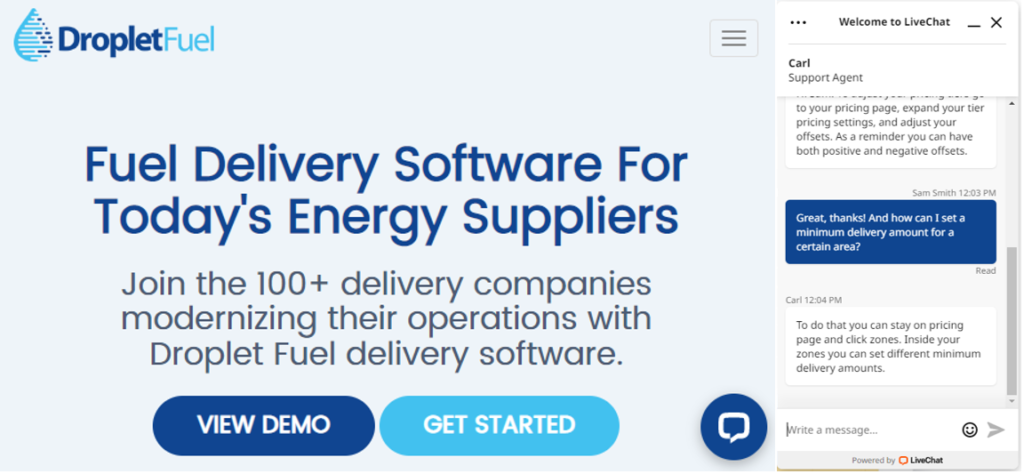
2 – How Does the Software Handle Automatic Delivery Accounts?
Your automatic delivery accounts are likely your most profitable. Making sure they do not run out of oil should be a top priority. A good back-office software will have an easy-to-use degree day system. The system should account for local weather automatically. This means you should not have to input any weather data manually each day.
Further, the system should take into account the home size and efficiency. This is especially important when setting up a new automatic delivery account.
Finally, the software should visually display how much oil is being used at the location. You should be able to quickly and easily view all your low automatic delivery accounts that are due for a delivery.
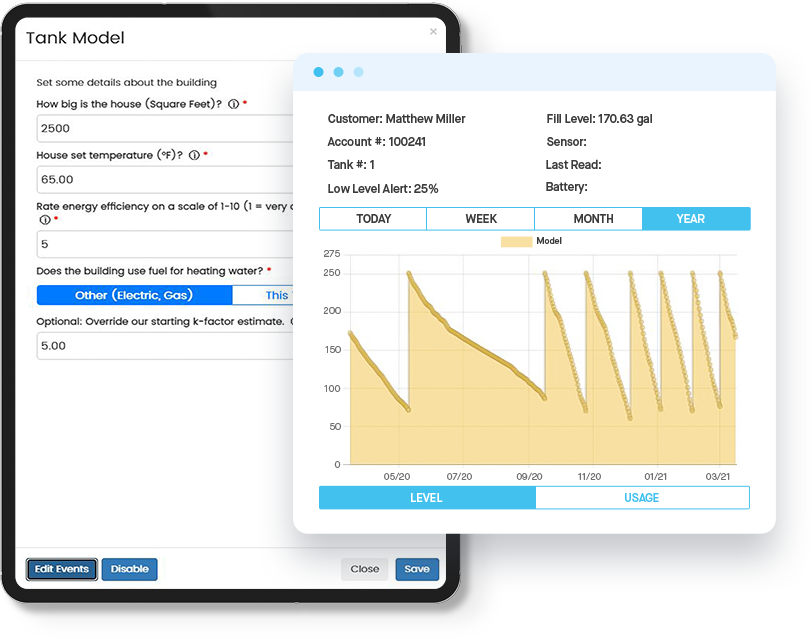
3 – Does It Support Online Ordering?
Online ordering is a must-have in today’s environment. However, online ordering does not mean you simply have a fillable form on your website. Online ordering means a customer can visit your website, check prices, and actually place an order for heating oil. The order should come through already paid for, and land directly in your list of deliveries, ready to be scheduled.
The best back-office software providers will provide a plugin that links to your website. This plugin will automatically adjust prices when you update them in your dashboard. It will also take into account delivery zones. This way, you will not end up receiving an order outside of your delivery area.
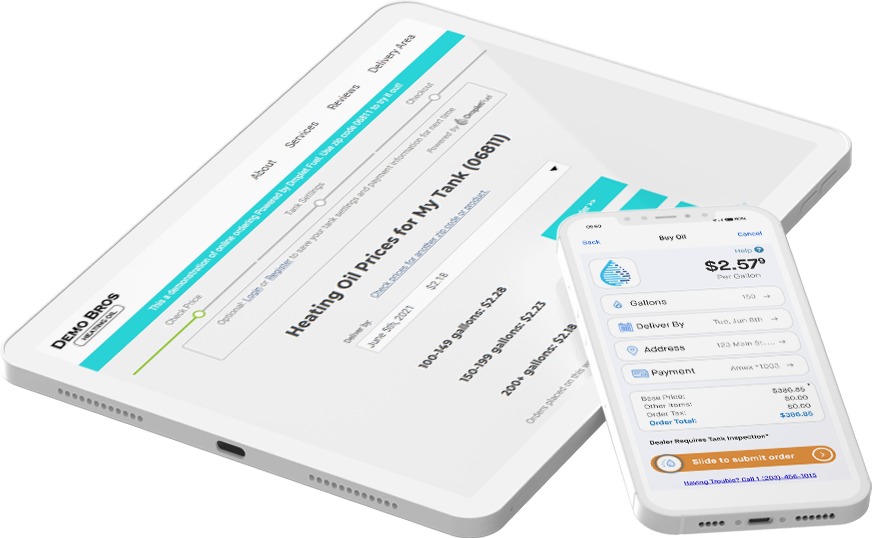
4 – How Are Credit Cards Handled?
First and foremost, you must make sure you are getting utilities pricing for your credit card processing. Utilities pricing gives you access to greatly reduced processing rates (under 1.5% vs. 3+% most merchants pay).
Switching to processing with Droplet saves the average oil dealer over $4,000 per year on processing.
Secondly, you should make sure the system automatically reconciles charges after a delivery. A good back-office software provider will give you several options for processing credit cards. One option is pre-authorizing cards before a delivery. A second option is to charge the card before the delivery, then refund after if needed. A third option is to simply charge the card after delivery.
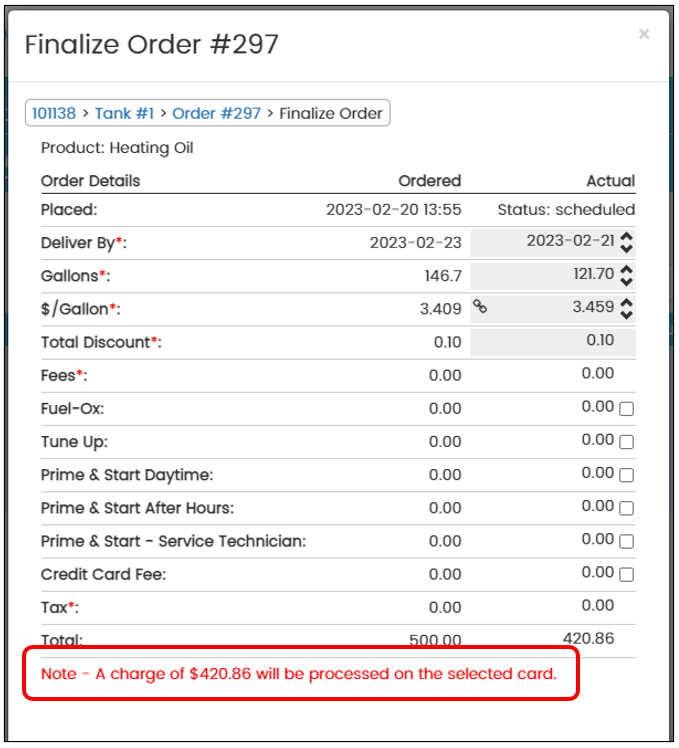
5 – Does the System Securely Store Credit Cards?
Storing customers’ credit cards makes it so much easier to process orders. A customer can call up, request a delivery, and have it paid for in seconds. Your back-office software should tie directly into a credit card vault. This not only improves the customer experience, but cash flow as well. That said, you should not be able to see a full card number once it has been vaulted. If that is the case, you should be very leery of the program’s security.
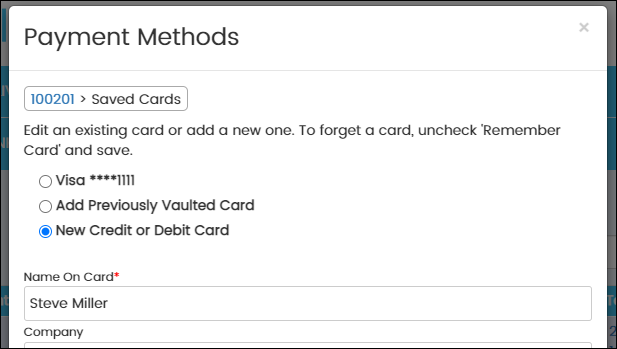
6 – How Does The Software Handle Ticket Printing?
There are several ways to handle delivery tickets. The most basic way is via old-fashioned hand-written tickets. If you are hand-writing tickets, please start the search for a back-office software provider. Printing tickets on a dot-matrix printer will save you hours of time each week compared to hand-writing tickets.
Your software should allow you to customize what is printed on the tickets. It should support standard oil delivery tickets and format the print layout accordingly.
If you have electronic meters and printers in the truck, then you may not need to print tickets in the office at all. Just search for a higher-end software package that includes electronic meter integration. With this setup, you can simply route the stops from the office and print tickets in the truck.
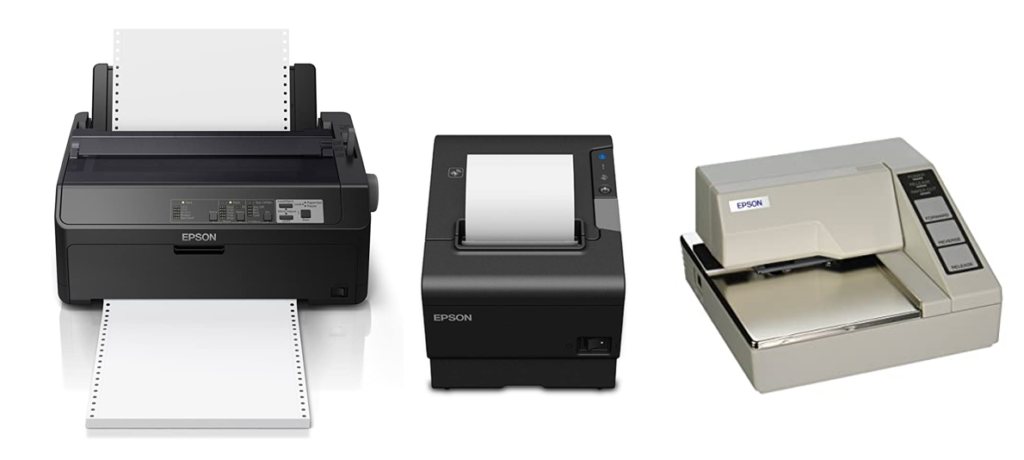
7 – What Kind of Reports Does the Software Generate?
Good reporting will go a long way in running a profitable business. Your software should easily generate a variety of date-range reports. Daily payment totals should be provided on a report to help with deposits. Delivery reports should summarize gallons by truck. Tax reports should help with sales tax filings. And marketing reports should help with retargeting campaigns for old customers.
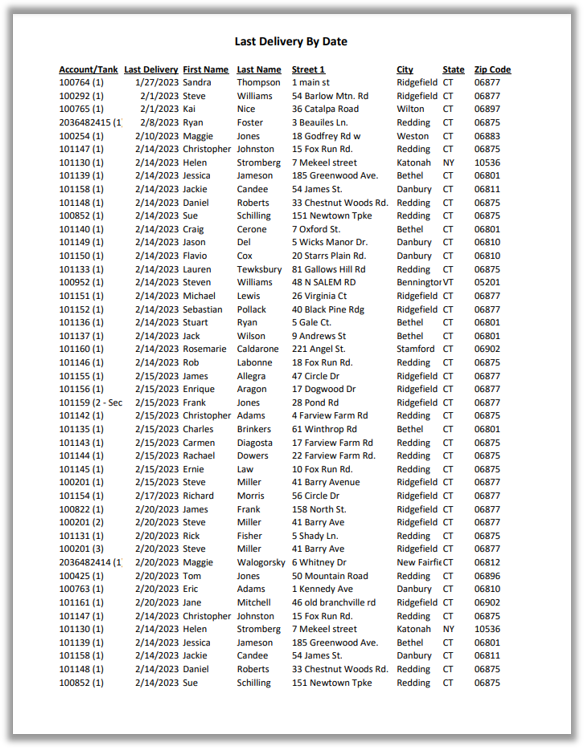
8 – Can Drivers Access Order Information From a Mobile Device?
Adding orders on the fly is something you all deal with on a regular basis. Do you text the drivers the new order information? Or call them and have them write down the info? Your software should allow your drivers to access the scheduled orders right from their smart phone or tablet. This means they will have all the order information as soon as you enter it into the system or assign it to them.
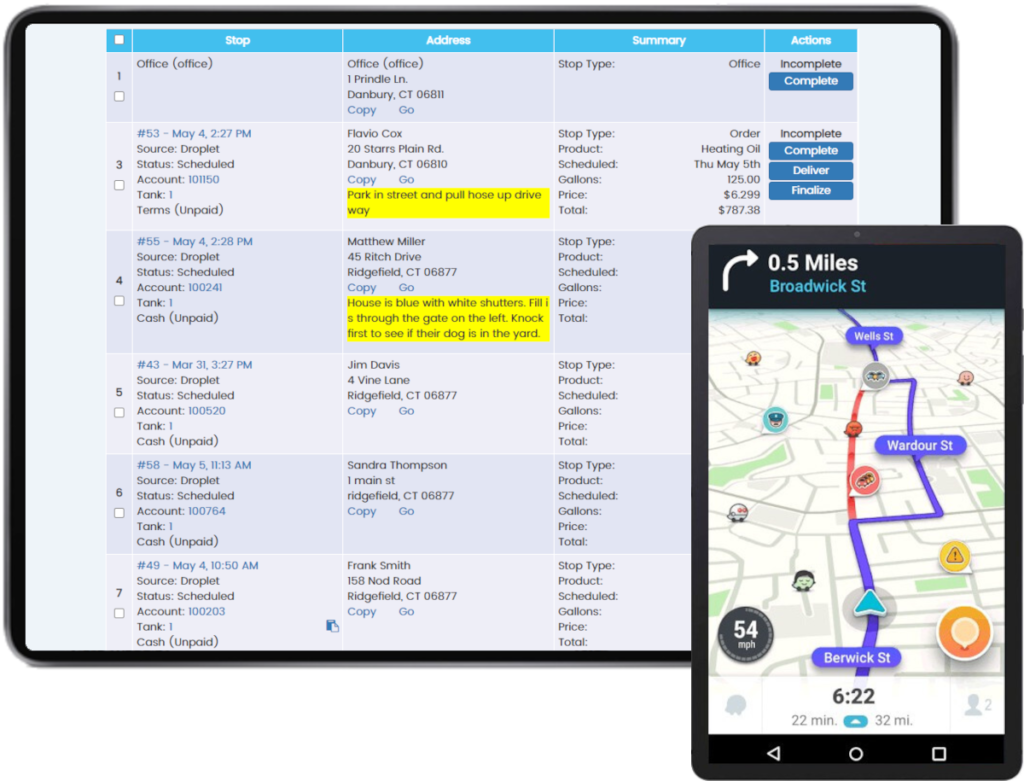
Routing stops from the office and dispatching them to mobile driver apps saves the average oil dealer with 3-4 trucks approximately 1.5 to 2 hours per day on routing.
9 – Does the Software Support Direct Communication with Electronic Meters?
A system that communicates directly with electronic meters will save the most time for your staff. Instead of printing tickets in the office, you will simply build routes for your drivers. Each driver will open a tablet in the truck to see where to go that day. When they arrive at a stop, the tablet will send the delivery info directly to the meter so they don’t even have to set a preset on the meter. Once the oil is delivered, the meter will tell the system how many gallons were delivered. It will automatically print a ticket for the homeowner, and mark the order complete in your back-office software.
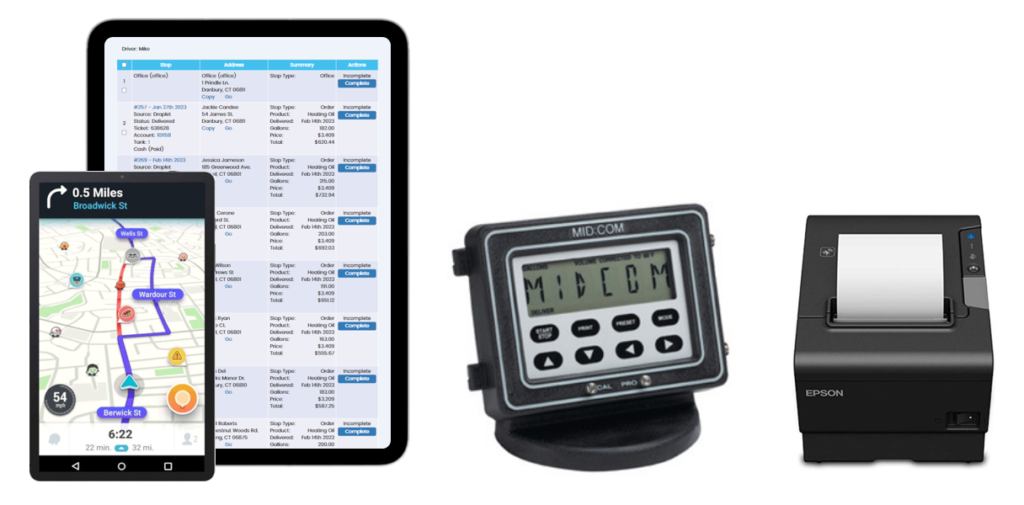
A driver app with an electronic meter interface can save approximately 3 minutes per stop. This can free up over an hour per day for driver!
10 – Is It Cloud-Based?
Being able to access your customer database from anywhere has become more important than ever. A cloud-based back-office software solution will allow you to log into your accounts from anywhere. If it snows and your office staff is forced to work from home, they should be able to log in and get their job done.
Old-fashioned software providers relied on dedicated ‘servers’ (usually just a desktop computer in the office that is left on all the time) to store their database. This means that if the power is out at the office, nobody can work. Furthermore, if something were to happen to that computer, lots of data could be lost.
Ask your prospective software provider if the system is cloud-based. Find out if you and your staff will be able to log into the system from any mobile phone or tablet as well.
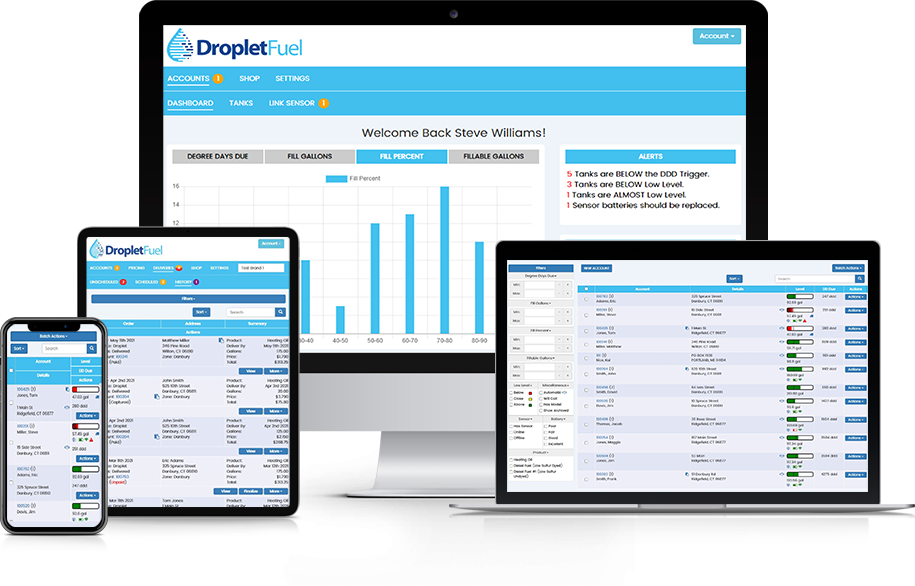
Back-Office Software Is a Big, Worthwhile Investment
There is, of course, one more topic to discuss: price. The best back-office software packages used to cost tens of thousands of dollars up front. Plus, you’d still be paying a 4-figure monthly maintenance fee. Fortunately, there are new tools on the market that are much more cost-effective. Depending on your needs as a business and the size of your company, you should be able to get a very comprehensive software package in the $495-800 per month range, without spending $50,000 up front.
The savings on credit card processing, coupled with the time savings on routing and finalizing tickets, often result in companies being able to reduce headcount by at least one person during the busy season. Put another way: the software more than pays for itself.
Don’t rush your decision when it comes to choosing a back-office software provider. Schedule demos with multiple providers and get a feel for the software and the support personnel. At Droplet Fuel, we are constantly innovating our software solutions. From our super easy-to-use interface, to our world-class support, you will not be disappointed if you make the switch to Droplet. Give us a call today at 203-456-1012 or schedule a demo to see the software for yourself.
Happy heating,
Steve
